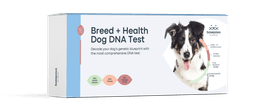Introduction
When you are holding your dog’s paw, the weight of their trust rests in your hands. And as you make each calculated snip, you’re not just cutting away excess nails; you’re sculpting a path to comfort.
Several problems may affect the general well-being of a dog if nails are not regularly trimmed. Overgrown nails cause discomfort forcing the toes to twist and damage affecting your pet’s posture and may worsen the condition of their joints. It becomes an extra difficult task, if your dog has a silky black coat, for reasons we will mention later in the article.
How To Prepare to Cut Your Dog’s Nails
When you are ready and fully prepared to clip your dog’s nails, both of you will have a smooth experience. What exactly do you need for this?
Practical Tips for Clipping
Gather the right tools
Nail Clippers: Dog nail clippers are available in two basic types including guillotine and scissors.
Nail Grinder/Dremel: These can be used instead of clippers because they are faster.
Styptic Powder: An anti-hemorrhagic agent used to stop bleeding.
Treats: You should always try to reward your dog with treats so it becomes a positive experience.
Create a calm environment
Choose a quiet, well-lit room without distractions to make more precise cuts. Spend some time in the room and let your dog become familiar with the tools and their paws being handled.
Know the anatomy
Understand where the quick is in the nail, especially if your dog has black nails. Use a flashlight or headlamp to illuminate the quick (sometimes spelled as “kwik”) - the pink area inside the nail, - ensuring you trim only the clear portion beyond it to avoid cutting into the sensitive quick.
First-aid kit
In case of any minor injuries, always have a first-aid kit nearby for quick response.
Better doing it with the friend
It can be more efficient and less stressful on both the dog and owner if a friend comes to help during the nail trimming session. They will hold the dog, comfort them, and assist in controlling the paw, which facilitates proper trimming that minimizes accidents.
Understand the Parts of a Dog’s Nails
A dog's nail is made up of two parts:
The nail itself: This is the hard outer shell made from the same protein as hair and nails on humans
The quick: It has a blood vessel and nerves making it alive. If cut, it bleeds.
The biggest problem with trimming black nails in dogs is finding out where the quick is and where the blood vessels plus nerves within the nail are located. In comparison to light colored nails whose pinkish quick can be seen, black ones conceal this part.
Hold Your Dog’s Paws Correctly
The goal of this is to ensure that the dogs feel safe without undue stress.
Control and precision
Gentle but firm grip
Support the toe and keep them steady.
Proper Ways of Holding the Clipper
Using the tools appropriately is key to a safe and effective nail trimming session.
Guillotine Clippers:
Hold the guillotine clippers in one hand with the hole at the end facing you and insert the tip of your dog’s nail through the hole and squeeze the handles and cut the nail.
Scissor Clippers:
Hold the scissor clippers like a pair of standard scissors and squeeze the handles together to trim the nail.
Nail Grinder/Dremel:
Touch the Dremel to the nail tip briefly, grinding away small amounts at a time.
For dogs with long hair make sure the hair is trimmed which can otherwise get pulled in the drummer.
Trim a Little at a Time
When you are doing dog nail trimming, determining the location of the quick in a dog’s nail can be challenging, especially in dogs with dark nails where the quick is not visible. Trimming little by little reduces the risk of injury.
Stop When You See a Black Dot
You should stop trimming your dog’s nails when you see a pale oval starting to appear at the tip of the nail. This indicates you’re getting close to the quick which can cause bleeding.
How Often Should I Cut?
According to petmd.com, below is the recommended frequency of trimming:
Monthly Trimming: Dogs need their nails trimmed every month in most cases.
Activity-Based Adjustments: Trim a dog’s nails less often if they walk on hard surfaces regularly, but do it much more frequently (every three weeks) for some dogs that are inactive or those not walking on hard surfaces.
Conclusion
Think about your dog racing through the park, wagging their tail and moving light and carefree. There is no clicking of long nails on the pavement! By keeping those nails neatly trimmed you give your dog comfort to freely run around.
Frequently Asked Questions
How do you trim a black dog’s nails?
It’s recommended to use a flashlight to brighten the nail and look for the dark mass in it - the quick.
What shall I do if I cut my dog’s nails short and it causes bleeding?
If the quick is accidentally cut, apply styptic powder or cornstarch to stop bleeding. If this does not help, immediately seek help from your vet. Always trim cautiously and learn how to cut dog nails before trying.
What separates long from correct length of nails?
Correct nail length should be such that when your dog stands their nails don’t touch the ground. Dogs with long nails can have difficulty walking and even pain as it affects their gait.
How do you know that it is time to trim your dog’s nails?
If you hear your dog’s nails on the floor or if they have trouble walking, then it’s time for some serious trimming exercise.



